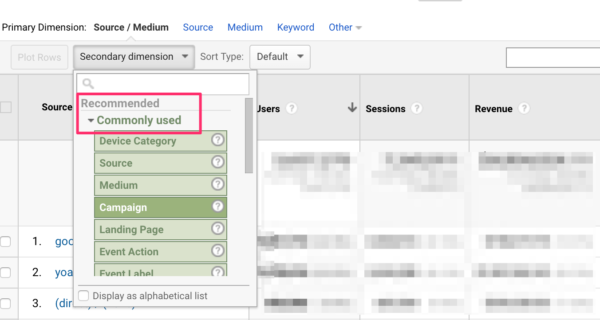Transform Your Data Comprehending With Second Measurements
Discovering information via the lens of secondary measurements opens up a realm of untapped understandings, supplying a much more nuanced viewpoint on the details of your dataset. By untangling the layers below the surface area metrics, you can uncover patterns and relationships that may have or else gone undetected, leading the method for informed decision-making and critical optimizations. This tactical utilization of secondary measurements not only improves your data understanding but additionally functions as a catalyst for opening the full possibility of your analytics undertakings.
Advantages of Additional Dimensions

By layering added measurements onto existing data, organizations can evaluate the impact of various variables on vital metrics, assisting them make more informed choices. On the whole, the application of additional dimensions leads to more insightful and robust information evaluation, equipping companies to drive tactical activities based on a much deeper understanding of their information.

How to Execute Additional Measurements
To effectively apply second measurements in data evaluation, services must first identify key variables that straighten with their logical goals and objectives. It is necessary to think about how these second dimensions will certainly supply added context and deepness to the primary information being assessed.

Studying Data With Second Measurements
Using additional dimensions in data evaluation boosts the depth and context of insights acquired from key information. By integrating secondary dimensions right into your analysis, you can gain an extra detailed understanding of the connections and patterns within your data. This procedure includes analyzing the primary information through various lenses or point of views, which can expose covert correlations or fads that might not be promptly noticeable when evaluating the data making use of only key measurements.
Evaluating information with secondary measurements enables you to segment and group your information in different means, supplying a much more nuanced sight of your dataset. secondary dimensions. This segmentation can aid you identify details elements that might be influencing the end results you are examining. By piercing down into the data making use of additional measurements, you can discover valuable insights that can lead decision-making and technique advancement
Ideal Practices for Additional Measurements
When incorporating additional measurements into data analysis, accuracy in specifying the measurements is essential for drawing out meaningful insights. It is vital to choose secondary dimensions that complement the main data efficiently.
One more finest method is to prevent redundancy in measurements. Make sure that the second measurements include brand-new perspectives or details to the evaluation, instead of replicating details currently present in the key dimensions. This will help avoid confusion and improve the interpretation of the data.
Moreover, it is important to consider the scalability of the evaluation when picking additional dimensions. Choose dimensions that can be easily increased or readjusted as needed to accommodate future data requirements or changes in analytical focus. By adhering to these finest methods, analysts can make best use of the worth of additional dimensions in information analysis and gain deeper understandings into their datasets.
Taking Full Advantage Of Insights Through Second Measurements
Incorporating second measurements strategically boosts data analysis by providing a deeper understanding of the partnerships within the dataset (secondary dimensions). By optimizing understandings with second dimensions, experts Read Full Article can discover valuable patterns, patterns, and dependencies that might not be right away apparent when examining the information through key dimensions alone
One secret advantage of using second measurements is you can find out more the capacity to segment and filter information more precisely. This segmentation permits a more granular analysis of details subsets within the dataset, making it possible for analysts to determine correlations and causations that may have or else been ignored.
In addition, secondary dimensions can aid in contextualizing primary data factors by including layers of info that provide a more thorough view of the data. This contextualization is essential for making notified choices based upon a holistic understanding of the dataset.
Final Thought
In verdict, incorporating additional measurements in data analysis procedures supplies an extra nuanced and detailed understanding of information, causing improved understandings and calculated decision-making. By incorporating additional variables that line up with logical objectives, concealed relationships and trends can be revealed, supplying a much more in-depth and contextualized view of information. This method takes full advantage of the possibility for optimization and index discovers brand-new chances within procedures.
Overall, the use of secondary dimensions leads to extra informative and robust data evaluation, encouraging businesses to drive strategic actions based on a much deeper understanding of their information.
Using secondary measurements in information analysis improves the depth and context of insights derived from main data.Examining information with second measurements permits you to section and group your data in numerous ways, supplying a much more nuanced view of your dataset.When incorporating additional measurements into information evaluation, accuracy in defining the measurements is essential for drawing out meaningful insights. Make certain that the secondary measurements add new point of views or details to the evaluation, instead than replicating information already existing in the primary dimensions.